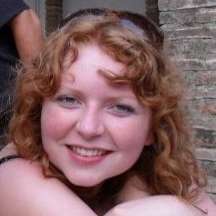I have never seen so many empty seats in the Royal Albert Hall. Empty, because it took all of three minutes for the audience to descend en masse to the standing arena, transforming it into a dance floor. Children and grandmothers alike got up, unable to resist the heady pull of the music. When the dance floor was full, the audience simply danced in the stalls. The simple fact is that it is impossible not to be moved to dance by the infectious sound of Vallenato – now recognised as Colombia’s national folk music.
Originating in north-eastern Colombia in the mid-twentieth century, this vibrant song form centred around the accordion, caja (drum) and guacharaca (wooden scraper), has grown to incorporate rock and pop influences. Tonight’s performance exhibited both traditional songs, using only the original ensemble in each of the four main styles of vallenato, and new compositions incorporating guitars, electric and double bass, gaita (Colombia’s indigenous flute) and percussion. I can’t provide a full list of the songs played (my Spanish isn’t up to scratch and frankly, I was having far too much fun to worry about not understanding the introductions), but here are some of the highlights…
The concert was opened by this year’s mentee, twenty-year-old British-born and self-taught vallenato accordionist José Hernando Arias Noguera, who aptly demonstrated why he was chosen as to take part in this, the third BBC Radio 3 World Routes Academy. Supported by the very talented caja player Alfredo Rosado, Noguera held his own in his performance of a vallenato classic. Following this opening song, Noguera was joined on stage by ‘Vallenato King’ Egidio Cuadrado and his band, all of whom were flown in from Colombia for the occasion. The crowd went quite literally wild. ‘La puya inglesa’ provided a welcome contrast to the vigorous and energetic dance numbers. Composed by Cuadrado for Noguera, this song is sung half in English and half in Spanish – a significant break with tradition. The audience was quiet at first, taking in the new music, but Noguera more than proved himself, winning over the crowd who all began to join in with the words as they learnt the refrain. Vocalist Carlos Mario Zabaleta (who seems to be the Elvis of vallenato) was outstanding throughout, but his rendition of ‘Hey Jude’ was particularly captivating. Gaita player Mayte Montero was also exceptional.
My only criticism is that the purpose of the World Routes Academy is to give a young musician a chance to learn from masters of the trade. Although Noguera clearly benefited from this opportunity and much programme space was dedicated to commentary on this, with the exception of a short solo in the encore, Noguera played a back seat role, because this concert was really about the legend that is Cuadrado. The programme also posed a number of questions identified as the ‘issues at the core of the World Routes Academy’: ‘Can music reinforce the sense of cultural identity across frontiers? Can cultural values be transmitted through music? Would he [Noguera] become more Colombian in the process?’ I’m not sure that these were answered.
Nevertheless, this was an outstanding concert and everything that live music should be. As an outsider to the tradition, I was shown precisely what this music is about and enjoyed the concert just as much as those who could sing along to every song. On this sultry summer night, Cuadrado and his band created a colourful festival atmosphere, helped by the cheering, flag-waving audience and regular shouts of ‘Viva la Colombia!’ On my way to the concert, I happened to see a number of posters advertising Colombia as a holiday destination with the tag line ‘The only risk is that you’ll want to stay’. The posters were right; in the little bit of Colombia created in London tonight, I did want to stay.


